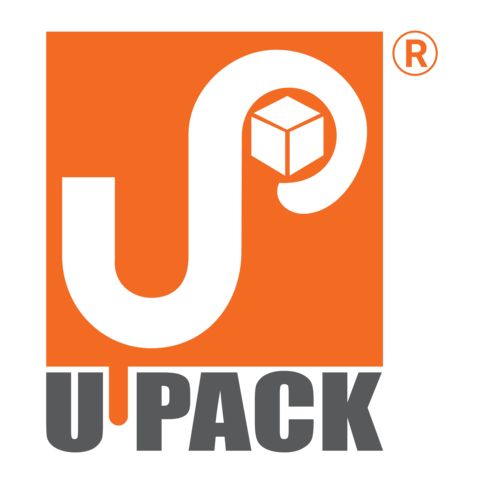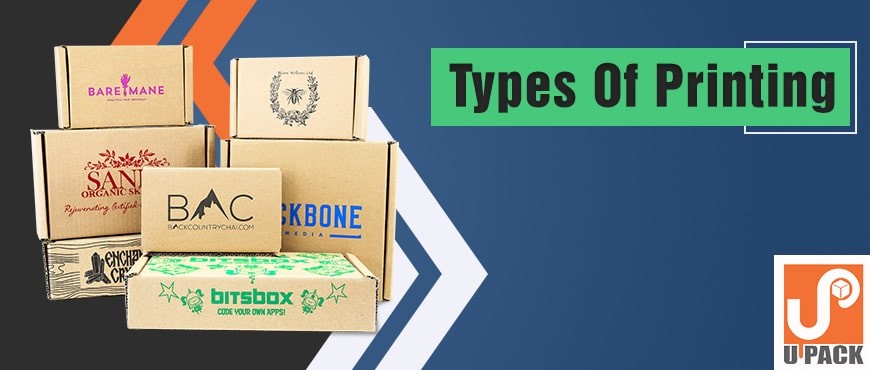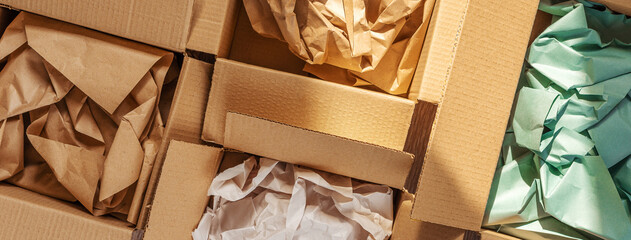Types Of Printing
Types Of Printing In Packaging Industry
Being new to printing could be an overwhelming experience, especially if you do not have any knowledge of the printing industry and the different types of printing services. All of these services have their pros and cons. There are some types that are perfect for short print runs while there are some types that are best suited for low-volume runs.
Choosing the perfect printing service can be a little difficult and confusing at times. This is why we have given a comprehensive guide that will help you understand the different types of printing and their costs.
Offset Printing
If you are looking for high volume high graphics print runs, offset printing will prove to be the best choice for you. Offset lithography printing is another term that offset printing is known by. If you compare the printing quality of offset printing with any other printing service, you will discover that offset printing is infinitely better.
The plates in offset printing go through water before coming in contact with the ink. The ink then sticks to the images and text on the spaces. The reason why the plates in offset printing go through water is because it sticks on the areas of the plates where there aren’t any images.
There are 2 different types of offset printing. They are web and sheet-fed printing. The biggest difference between these two is that the paper is already cut before printing in sheet-fed printing, while the paper is not cut and still present in its roll in web-press printing.
Magazines, newspapers, brochures etc. all use offset printing. Offset printing does not come cheap as the cost associated with it is on the higher side. Paper, cost, ink, labor, and plate are a few factors that contribute to the high cost of offset printing. Another disadvantage of this form of printing is that it is difficult to change the layout of the plate once made.
Digital Printing
The speedy printing process and high-quality output of the digital printing process are making it famous among people. The plates do not need to be prepared during the printing process. Digital printing does not require too much manpower and neither does it require too much energy. It is easy and quick. Chemical and paper waste is kept to a minimum with these printers. The ink only remains on the surface and does not get absorbed by the paper.
There are 2 main technologies in the digital printing industry. These are xerography and inkjet. Digital printing costs lower in comparison to other forms of printing especially with short printing runs. Digital printing is somewhat similar to offset printing when it comes to quality of the print. The paper cost and setup of digital printers is slightly high; however, digital printing is, in general, more cost-effective in comparison to offset printing for shorter runs.
Gravure
An image is engraved in a printing cylinder in this form of printing. Gravure printing is also known as rotor grave printing. You will simply have to ink the cylinder, once you do that, the ink will easily transfer onto the paper and print the image that you desire.
Labels, Packaging, magazine, and newspapers use this form of printing the most. Gravure printing is not as popular as it once used to be. Gravure printing is cost-efficient as it can produce numerous prints quickly without using too much ink.
Flexography Printing
Web presses are used to perform this form of printing. Web presses print continuous and long rolls of paper. Flexography printing uses rubber plates and water-based inks to print texts and images. Flexography printing is extremely popular as it enables quicker production. The reason behind its quick production is that the ink dries very quickly. Materials like plastic can greatly benefit from this form of printing because of its quick drying results.
Even though flexography-printing machines are slightly expensive, they prove to be cheaper in the long run as new flexography printing machines do not damage easily and have remarkably quicker production than other forms of printing. This form of printing is a great option for people who want to mass produce products on a short notice with basic to medium quality graphics.
Screen-Printing
Promotional items, t-shirts, and printing posters are the main items for which companies use screen-printing. Screen-printing utilizes different inks of bright colors. Initially, screen-printing was only restricted to silky materials.
However, you can screen print different types of materials these days. You have to lay out a design on top of a screen before the screen-printing process. You have to expose it to light and cover it with photo emulsion later on. The emulsion hardens up due to its exposure to heat while the remaining emulsion washes away. This leaves a stencil. You can use a squeegee to pull the ink of the stencil.
Screen-printing would be a great option for people who want to produce a batch of top-quality printed shirts. It will be cost effective and the quality will be great as well.
Embossing
You have to create an impression of a design on a product’s surface in this form of printing. Pressure is applied on the objects and once the pressure releases you will see your design embossed on the surface.
Mentioned below are the two most common types of embossing
- Foil block: You have to fill an embossed design with metallic paints like gold and silver.
- Blind embossing: The color of the product itself is the embossed mark.
Litho Printing
Litho printing shares numerous similarities with digital printing. You are free to do full-color prints on various physical surfaces in this type of printing. Litho printing also gives you the option of personalized promotional products. You will require high-resolution artwork for litho printing to be effective.
Embroider Printing
By decorating fabric with stitched designs you can recreate artwork by embroider printing. Embroider printing is usually done by companies that require bulk production. These companies require special printing machines for bulk producing through embroider printing. It would be advisable to avoid amalgamating different colors in this form of printing. People often choose embroider printing because of how cheap it is.
Transfer Printing
If you have to print an image on an uneven or curved surface, transfer printing will prove to be the best option for you. Cloth-like surfaces and materials like porcelain are best suited for this form of printing. You should have digital designs and images with high resolutions for this form of printing. This will enable you to print the images on a plethora of different products.


